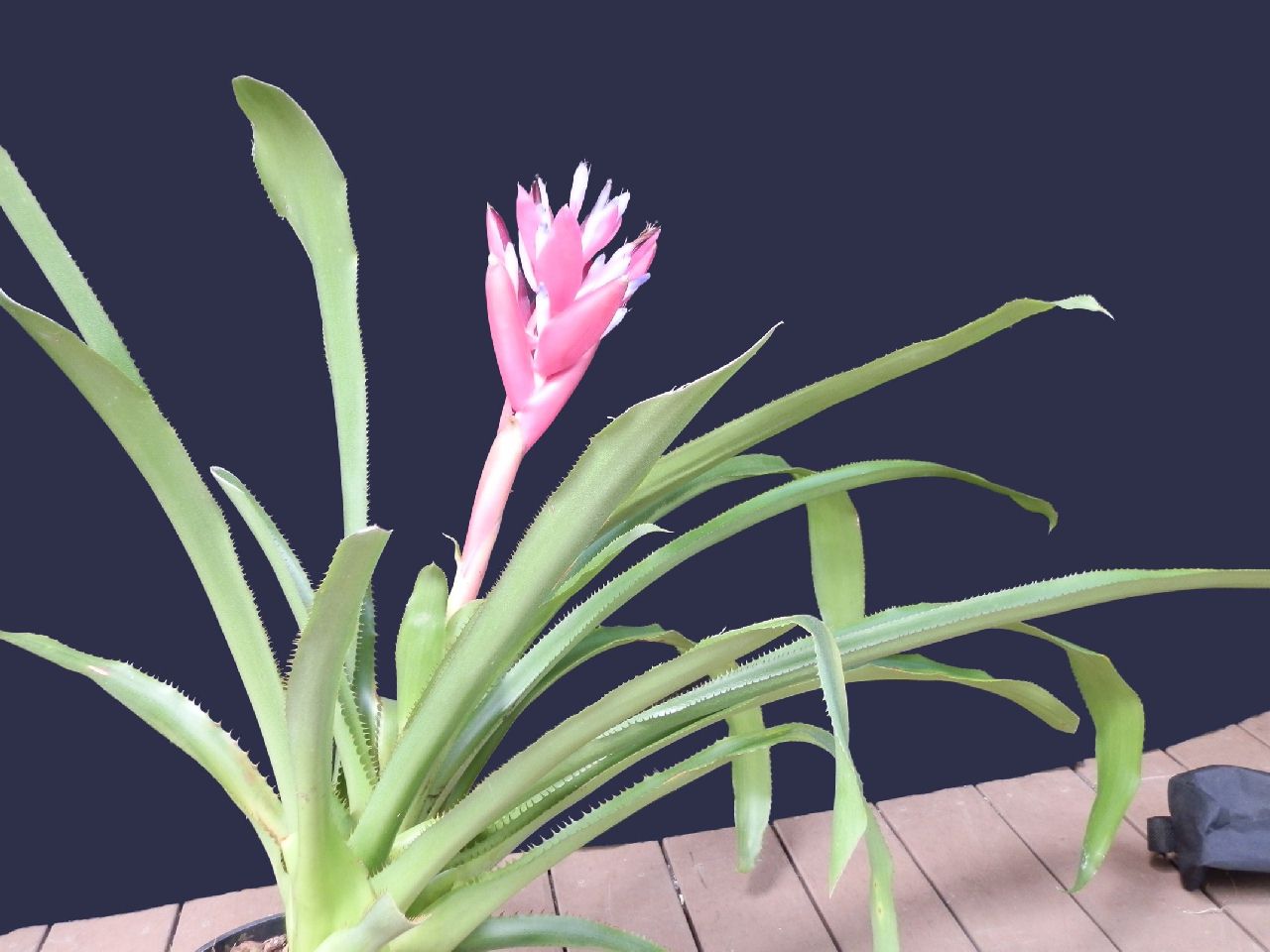
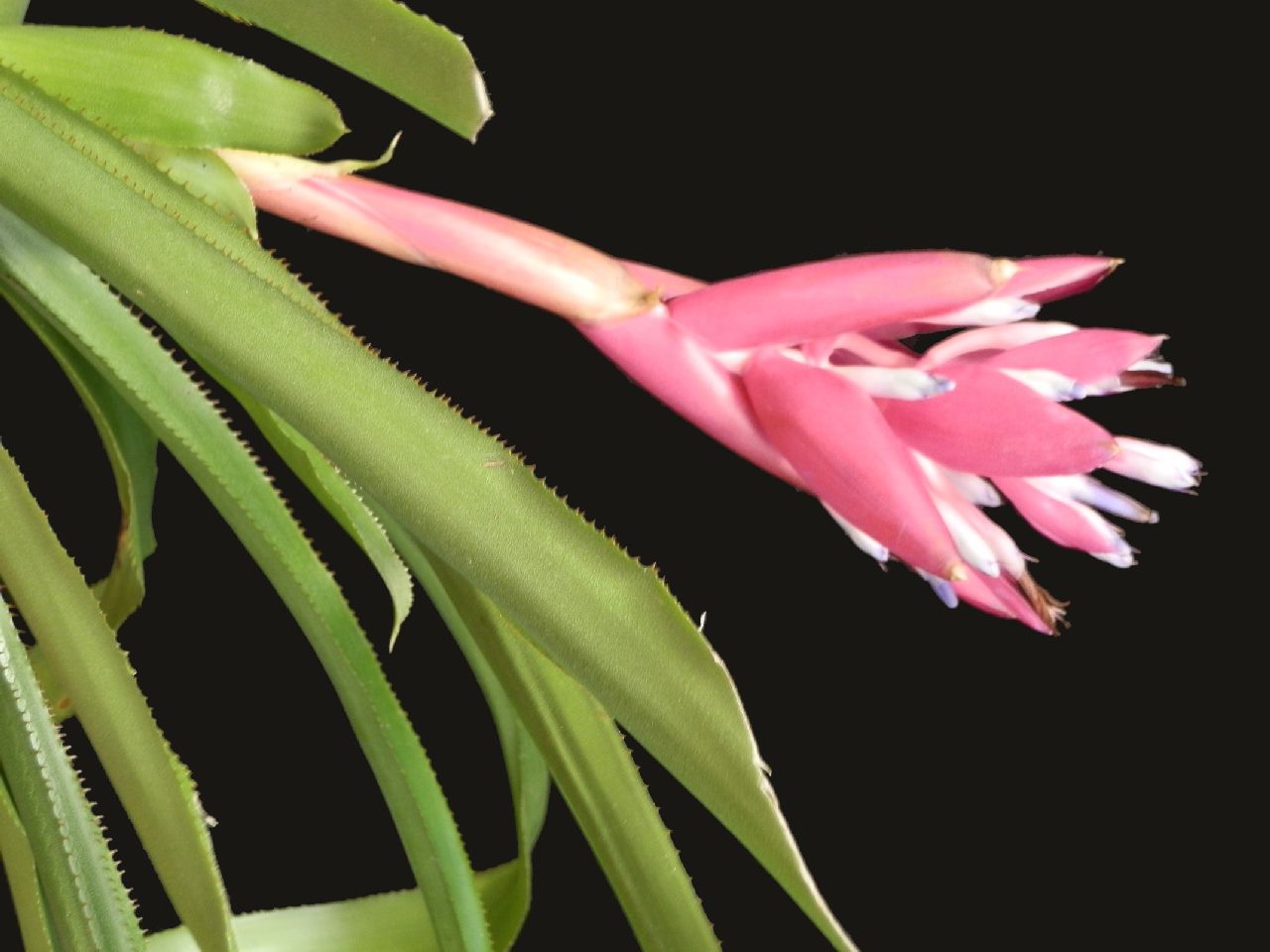
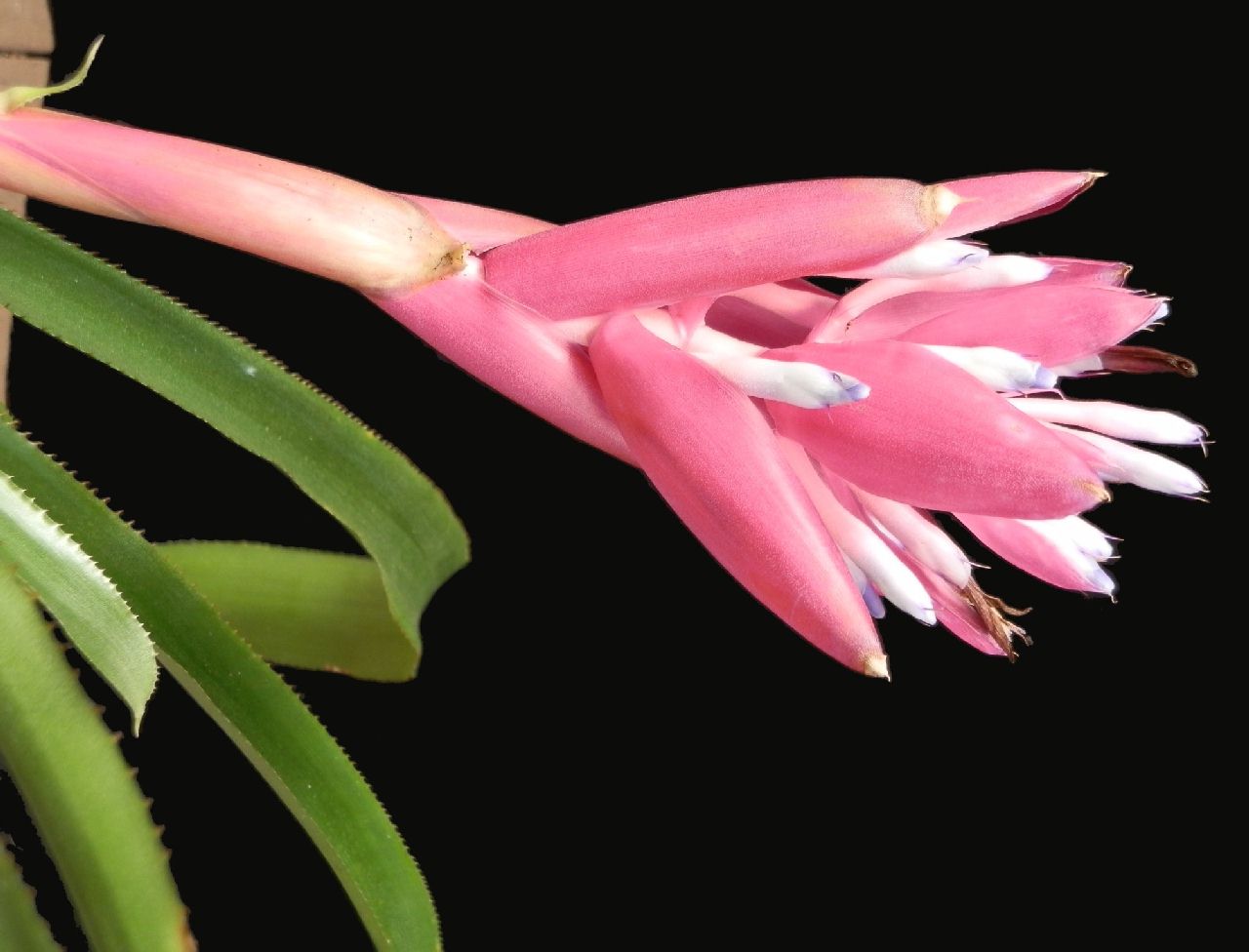

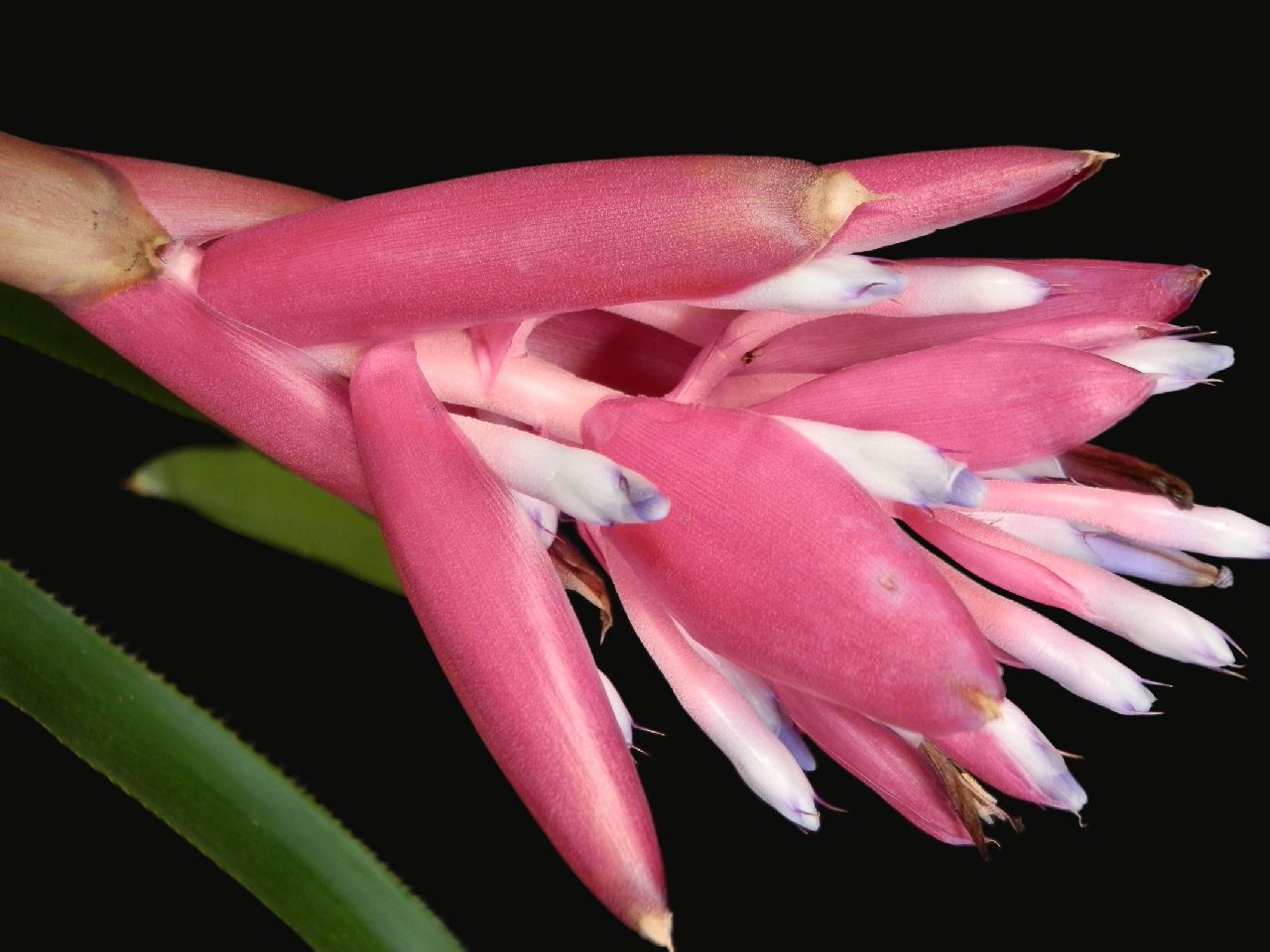
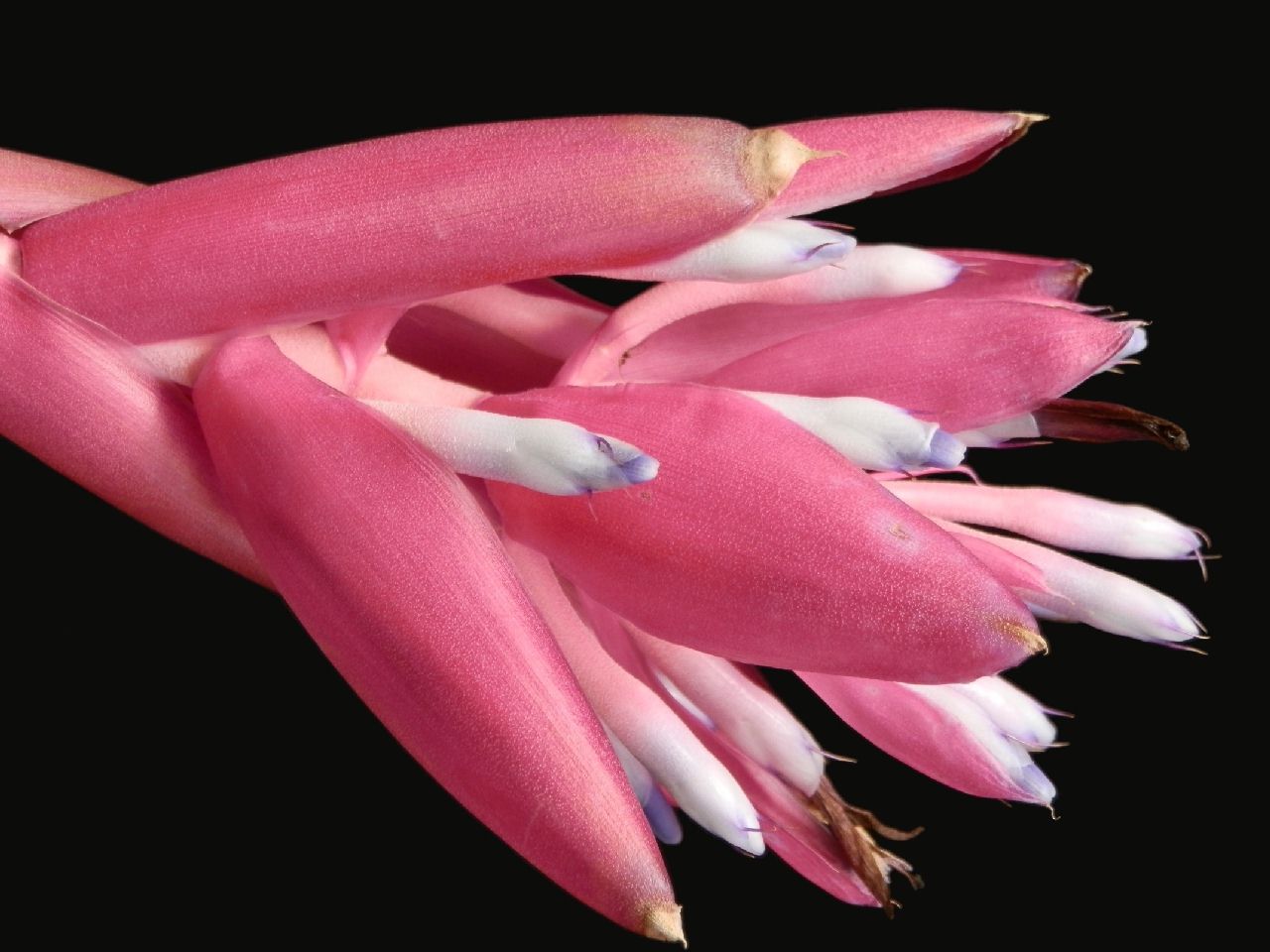
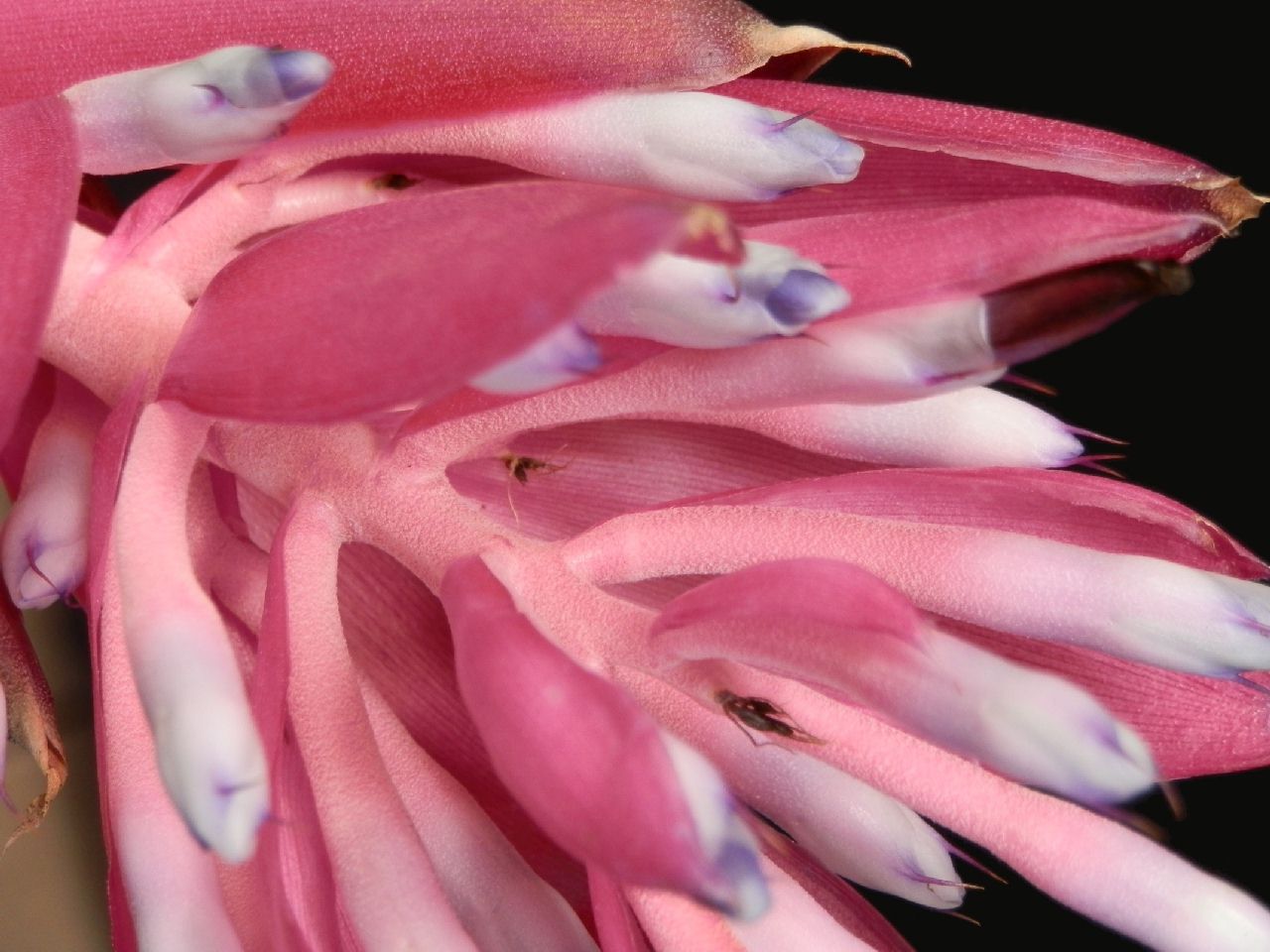
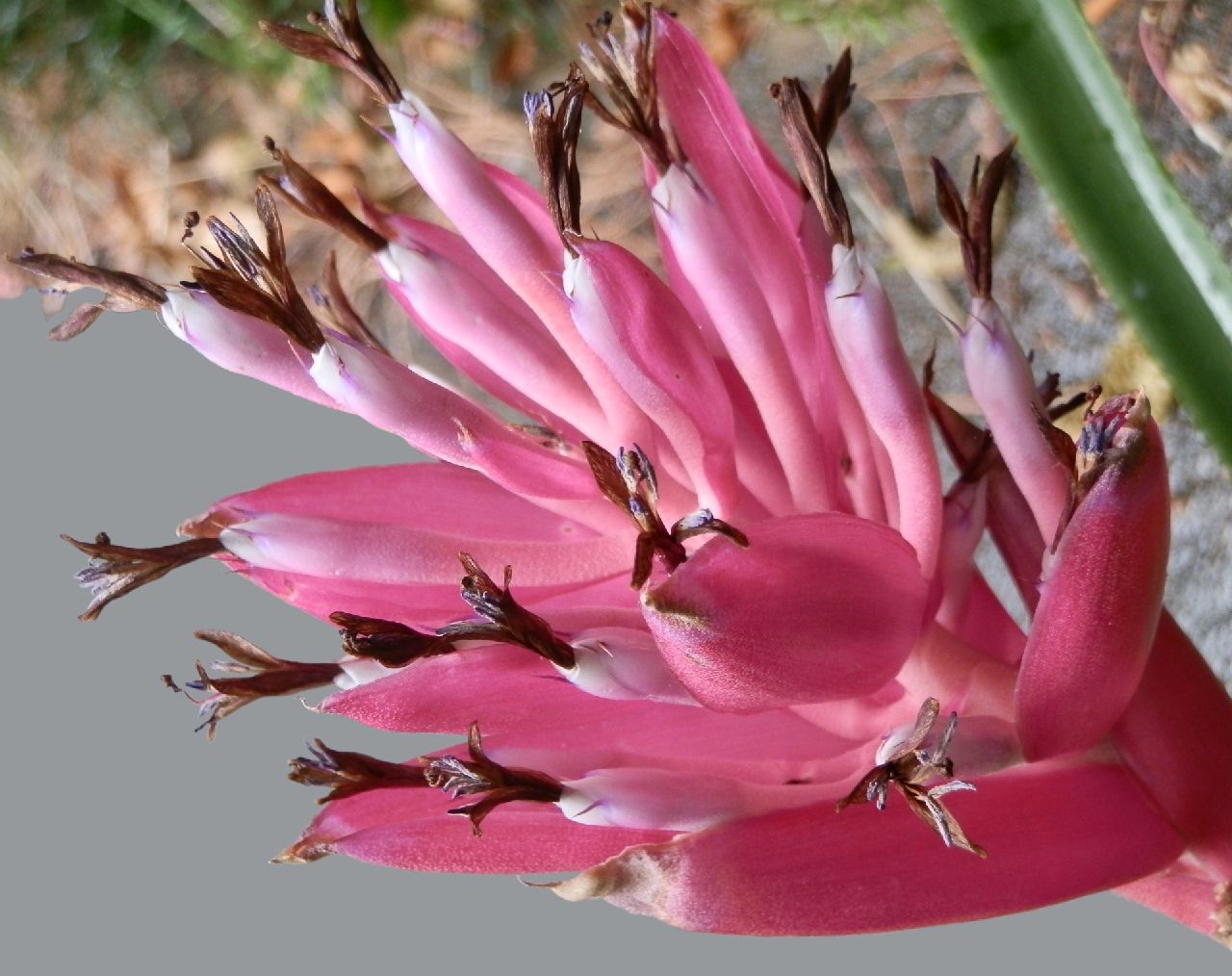
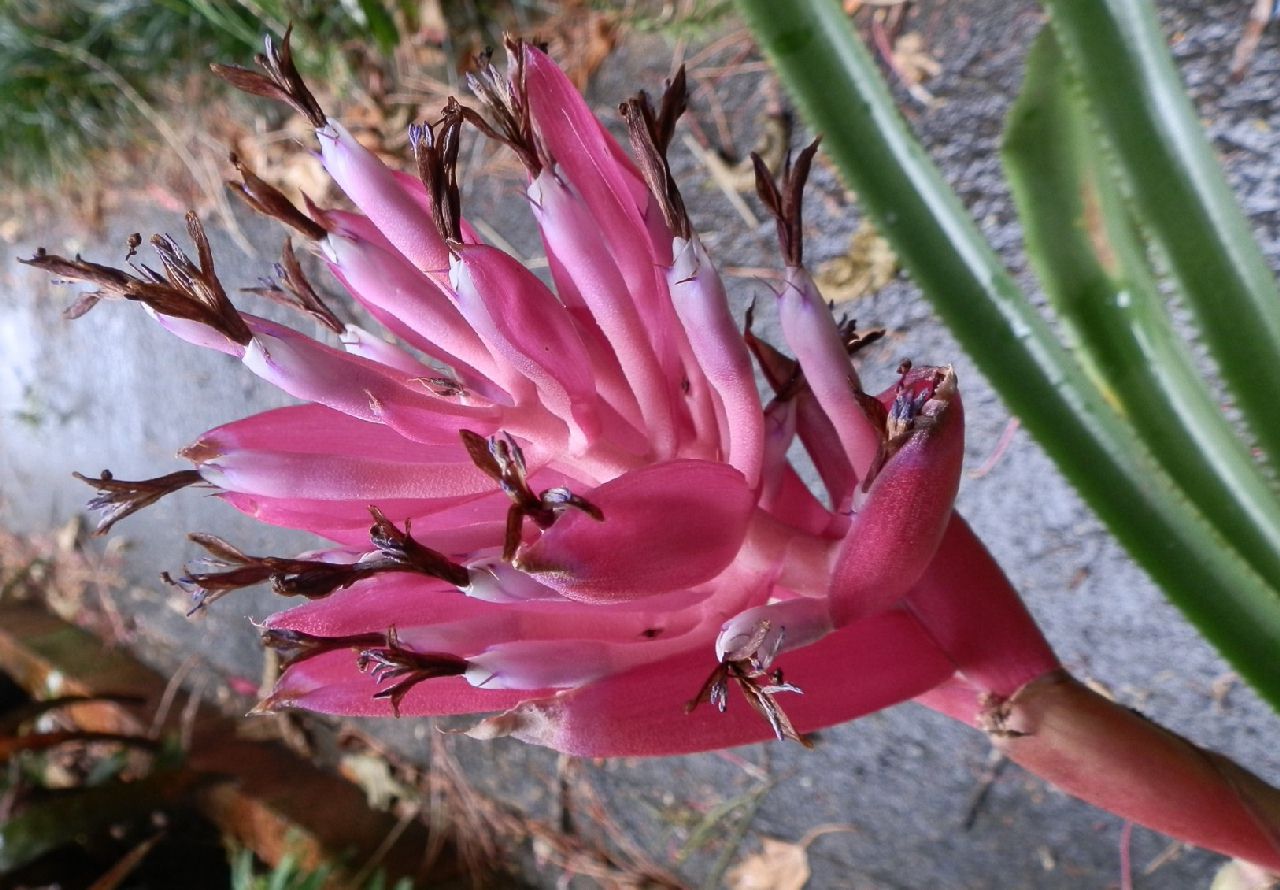
Portea grandiflora Philcox, Kew Bull. 47: 273-4. 1992
P kermesianae Brongn. ex K. Koch affinis sed inflorescentia minore aliquantum laxiore, bracteis multo brevioribus filiformibus pedicellos tantum aequantibus, sepalis maioribus in dimidio inferiore tantum connatis, ovario dense lepidoto differt.
Typus: Brazil, Harley et al. 18441 (holotypus CEPEC; isotypus K).
Plant epiphytic, to 50 cm tall when flowering.
Leaves up to 80 cm long, exceeding inflorescence;
Blades ligulate, (12-)16-30 x 2.5-3 cm or more, acute to rounded at apex with mucro up to 3 mm long, pale green, purplish at base and margin, distally laxly short-serrate, proximally becoming more densely so with soft spinose teeth to 2.5 mm long;
Sheath 12-15 x 6-9 cm, entire, densely dark-brown-lepidote.
Scape erect, 5 mm in diameter, floccose.
Scape bract ~ 6- 7 cm long, imbricate, obovate, shortly acuminate, laxly and mmutely serrate towards apex, sparsely pale-lepidote.
Inflorescence 10-15 x up to 7 cm, shortly branched towards base;
Primary bracts up to 6cm long. obovate-oblong becoming narrower to linear above, apex acute, mucronate, white, pink-tinged, pale-lepidote;
Branches 1 - 3-flowered.
Floral bracts 3- 5 mm long, filiform, equalling or slightly exceeding stout pedicel.
Sepals 2. 2 x 1 cm, asymmetric, long-mucronate, connate to half their length; mucro 4- 5 mm
Petals 3.5 - 4 cm long, up to 2mm wide (? incomplete), linear-spathulate with 2 appendages 1.5 x 0.7 mm at base.
Stamens: 3 free, 3 adnate to petals; filaments 2.8-3cm long; anthers 0.7 cm long.
Ovary inferior, densely white-floccose; seeds many, 2.5-3 mm.long with entire caudal appendage up to 1 mm.long. (Fig. 9).
BRAZIL. Bahia: c. 6 km SW of Itacare, S of mouth of Rio de Contas, 31 Jan. 1977, Harley et al. 18448 (CEPEC); c. 8 km SW of Itacare, S from ItacareČi-Ubaitaba road, S of mouth of Rio de Contas, 31 Jan. 1977, Harley et al. 18441 (holotype CEPEC; isotype K).
Differs from P. kermesiana in
Inflorescence smaller, somewhat more lax.
Floral bracts filiform and much shorter, almost equalling the pedicel.
Sepals larger, joined in the lower half.
Ovary dense lepidote